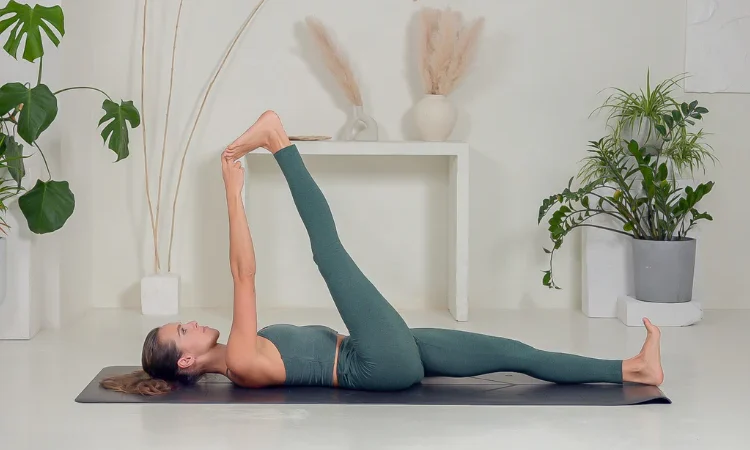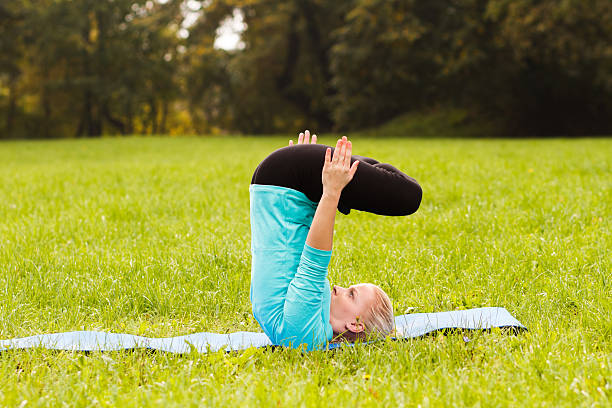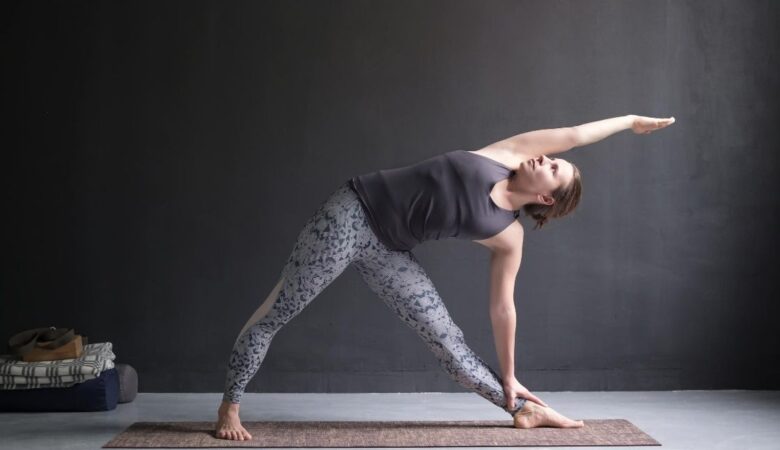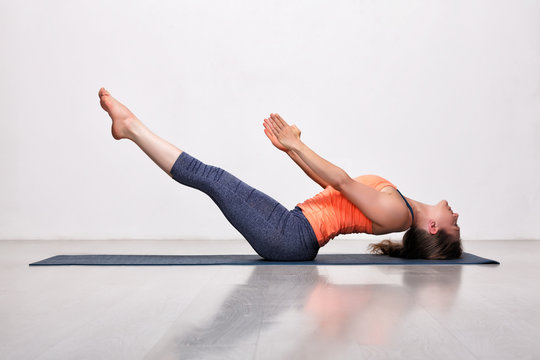Kapotasana (कपोत्ताससन) is also known as the “Pigeon Yoga”. Kapotasana or the Pigeon Pose is a good posture from the main postures of yoga that helps eliminate fat from our body. In today’s busy life, people can’t find time for their body, due to the work of sitting in the office throughout the day. Due to the lack of physical exertion, many physical problems such as obesity, weight gain etc. can be produced. To get rid of these problems one should try Kapotasana or the pigeon pose yoga. As Kapotasana benefits are such that the regular practice of this Asana can provide a healthy life.
This yoga is very important to keep the body healthy. By practicing this pose regularly, one can stay healthy both physically and mentally. Practicing Kapotasana or the pigeon pose removes stress. With this posture, the respiratory action is good and the lungs are strong. Let’s now check out the Kapotasana benefits and its steps, precautions and all the other details regarding the yoga pose.
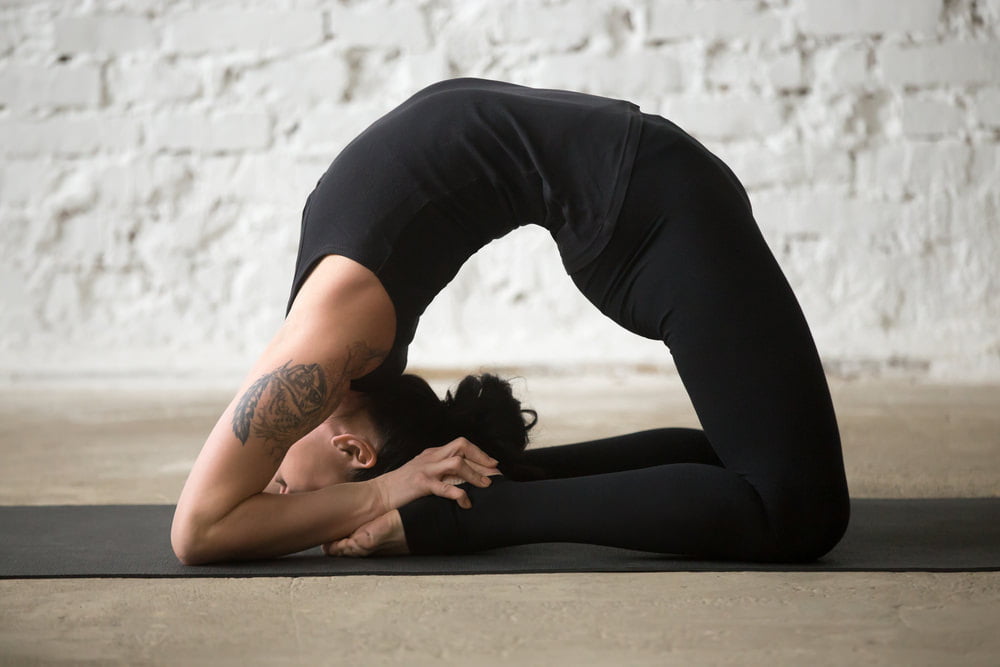
Source :- yogabaron . com
Table of Contents
What Is Kapotasana Or The Pigeon Pose?
Kapotasana (कपोत्ताससन) or pigeon pose is made of two Sanskrit words, where “Kapot” means ‘Pigeon’ and “Asana” means ‘posture’ or ‘Yoga Pose’. In this posture, the body looks like a pigeon.
This pose helps in the development of your bone and brain. With this Yoga, your body gets energy. It also puts your body on hold; this is what protects us from a variety of diseases. Let us know the method of practicing the yoga pose and Kapotasana benefits.
NOTE:
Kapotasana Or Pigeon Pose Style: Astanga yoga
Kapotasana Or Pigeon Pose Level: Intermediate
Kapotasana Or Pigeon Pose Duration: 60 seconds (30 seconds for Pigeon Pose beginners)
Kapotasana Or Pigeon Pose Strengthens: Back and Groin
Kapotasana Or Pigeon Pose Stretches: This Pigeon Pose stretches ankles, abdomen, thighs, groin, throat, the front part of the body, thorax.
What Are The Asanas To Practice Prior To Kapotasana or Pigeon Pose?
Practice these below mentioned Asanas before doing the Kapotasana or the Pigeon Pose. If you practice these Asanas prior to Kapotasana, it will help you to execute the Kapotasana or the pigeon pose easily. Let’s check out the Asanas that you need to practice before Kapotasana Or the Pigeon Pose:
- Setu Bandha Sarvangasana (सेतुबंधासन) or Bridge Pose
- Baddha Konasana (बद्ध कोणासन) or Bound Angle Pose
- Virasana (वीरासन) or Hero Pose
- Gomukhasana (गोमुखासन) or Cow Face Pose
- Bhujangasana (भुजंगासन) or Cobra Pose
- Vrikshasana (वृक्षासन) or Tree Pose
- Utthita Trikonasana (उत्थित त्रिकोणासन) or Extended Triangle Pose
- Utthita Parsvakonasana (उत्थित पार्श्वकोणासन) or Extended Side Angle Pose
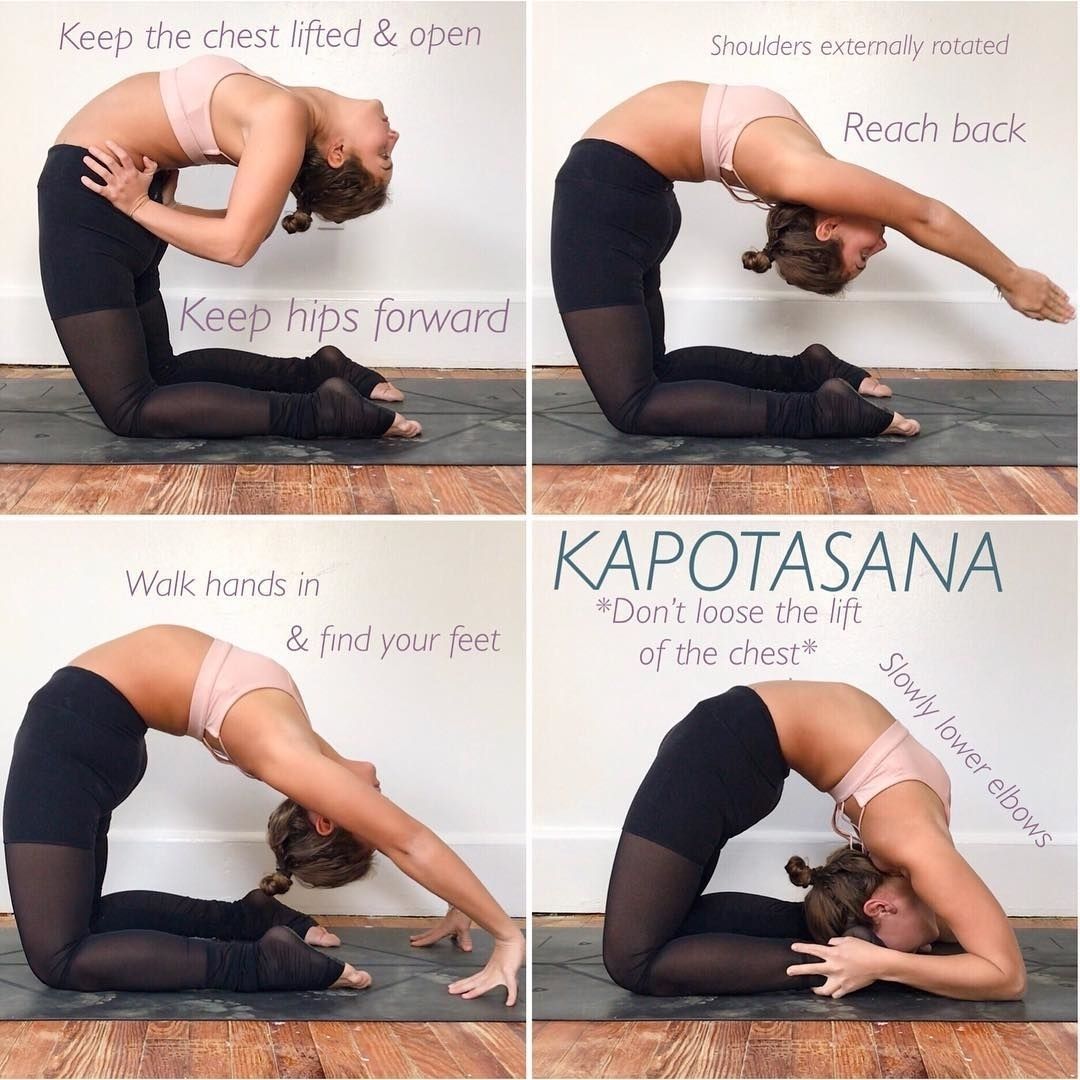
Source :- i.pinimg . com
How To Do Kapotasana or Pigeon Pose?
Before knowing the Kapotasana benefits, it is very important to know how to do it, before going to any yoga, it is very important to have full knowledge about it, let us know the method of practicing Kapotasana or the pigeon pose in detail:
Step By Step Instructions To Do Kapotasana Or The Pigeon Pose:
- First of all sit on the floor in Vajrasana
- Then lift the body to stand on the knee (do not stand on your feet)
- After this, place both of your hands near your feet (under the waist)
- While slowly resorting to your palms, start slowly turning backward
- Now fold your waist in comfort and move the head backward too
- Now slowly keep your head on the floor
- Carefully hold the ankles of the feet with your palms
- Keep this position for 30 to 60 seconds or according to your capacity. Keep breathing deep while doing asana
- Gradually lift your body upwards and sit back in the Vajrasana
Tips On Kapotasana Or Pigeon Pose For Beginners:
If you are new to this Kapotasana or Pigeon pose, then follow these Pigeon pose for beginners tips:
- If you can’t reach the floor with your head, then take a block to put between the feet and place the head on that block instead.
- Do not create any pressure on your body. Slowly practice this posture and gradually you will reach your goal.
- Do not try this pose yourself; rather try this posture with the help of an expert.
- Keep your stomach empty for 4 to 6 hours before practicing
- Performing this pose in the morning will be the best for Pigeon pose beginners
Kapotasana or Pigeon Pose Precaution:
Before doing this posture of yoga, you must know some important information about it. Be aware of its caution, when to do it, then do not do it etc. Below are some precautions that you have to keep in mind before practicing Kapotasana or the pigeon pose. These cautionary measures include:
- Do not perform this yoga Asana without the help of a yoga expert
- You may be harmed by single wrongdoing so try to do this asana only when you are practicing yoga for several months.
- This posture is not for those people who are starting yoga
- Do not be hasty in this posture, because it takes time for the body muscles to become flexible
- If you have trouble in the ankle, knee, or have any type of injury in the waist, then do not try to do this asana
- This posture is not for pregnant women
Kapotasana or Pigeon Pose Benefits:
No matter what yoga pose it is, each and every yoga pose has some benefits. In the same way, Kapotasana or Pigeon Pose benefits are many. This gives us relief from many kinds of diseases, let us know the Kapotasana benefits in details…
Kapotasana Benefits For Physical Pain:
Kapotasana or the pigeon pose is beneficial to repair various types of pain in your body. This posture helps to reduce the pain of your shoulders, spinal cord, shin pains, and elasticity in your hands.
It helps to repair the pain of the hips, back pain, and shoulders and strengthens them. The Kapotasana benefits strengthen your foot muscles and thus help to get rid of joint pain.
Kapotasana Benefits For Better Immune System:
With this posture, you can also cure various types of diseases, as this asana works for the betterment of the immune system. Regular practice of this asana reduces high blood pressure; improve the digestive problems etc. and also helps in curing urinary disorders. It activates the nervous system and also enhances oxygen intake, it strengthens your lungs.
Kapotasana Benefits For Mental Piece:
The Kapotasana or the pigeon pose helps you to provide peace of mind. This reduces our stress, which makes you feel more at doing any of your work, and you can do that work well.
Other Kapotasana Benefits:
- Kapotasana or the pigeon pose helps in stretching the lower part of the body
- Kapotasana or Pigeon yoga stretches stomach organs and thus improves your digestion
- Practicing Kapotasana or the pigeon pose regularly gives relief from the back problem, especially the sciatica
- It keeps the waist strong
- By practicing Kapotasana or the pigeon pose regularly, the hip area become flexible and thus you get relief from muscle problems
- Stretching the legs in maximum position in this posture helps to relieve the stress and anxiety problem
- Practicing Kapotasana or the pigeon pose reduces stress in your chest muscles and strengthens the area between the stomach and thigh
- It also improves the function of urine and reproduction system
- Blood pressure is controlled by Kapotasana or the pigeon pose and the effect of long-term diseases is also less
Pigeon Pose Variations:
The Kapotasana or Pigeon Pose is a difficult yoga pose. Thus it is not everyone’s cup of tea. For the Kapotasana or Pigeon Pose beginners here are some of the Pigeon Pose variations that you can try if you are a beginner at this pose.
The pigeon pose variations mean a modification for every person. With the help of these Pigeon Pose Variations, you can make this mudra way more accessible, or can spice up the posture.
There are total 6 Kapotasana or pigeon pose variations to get started with. Remember that you have to repeat these Kapotasana or Pigeon Pose variations on both sides.
- Classic Pigeon Pose
- Pigeon on a Perch
- Resting Pigeon Pose
- Revolved Pigeon Pose
- Reclined Pigeon Pose
- One-Legged King Pigeon Pose
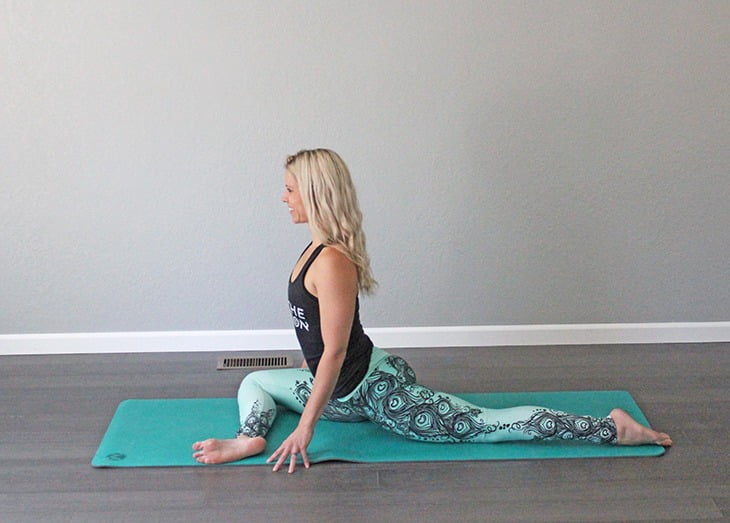
Source :- yogiapproved . com
Classic Pigeon Pose:
The Classic Pigeon pose is of basic level. This classic pigeon pose provides a stretch in your hips and at the same time releases your lower back.
Step By Step Instructions To Do Classic Pigeon Pose:
- From the Downward-Facing-Dog position, lift the right leg and take it to your back
- Place the right knee near the right wrist bringing the right foot toward your left side
- Keep the left leg stretched and resting
- If the right hip is elevated, then rest the right hip on a folded blanket or yoga block
- Ensure that your shoulders and hips are square to the front of the mat
- Inhaling lift the chest as well as lengthen the spine
- Exhaling lower the chest and take it closer to the yoga mat
- Keep your palms on the yoga mat and bring the forearms to a yoga block.
- Look straight i.e. in front of you
- Hold on to this position for about 15 to 30 seconds
- Release to the previous position and shake the right leg to bring blood circulation back to the hip
- Now repeat this pose on your opposite side i.e. using the left leg
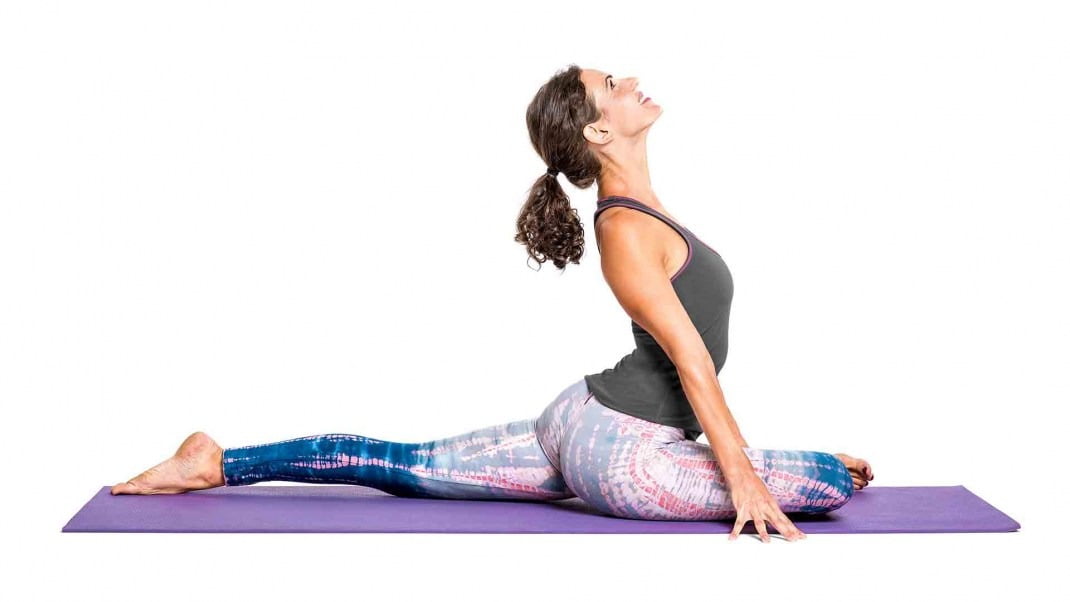
Source :- gaia . com
Pigeon On A Perch
This Pigeon on a perch pose is called “Supported Pigeon Pose” in English and “Salamba Kapotasana” in Sanskrit. This pigeon pose variation is like classic pigeon pose but the only difference here is that y6ou have to look upwards instead of in front.
Step By Step Instructions To Do Pigeon On A Perch or Supported Pigeon Pose:
- From the Downward-Facing-Dog position, lift the right leg and take it to your back
- Place the right knee near the right wrist bringing the right foot toward your left side
- Keep the left leg stretched and resting
- If the right hip is elevated, then rest the right hip on a folded blanket or yoga block
- Ensure that your shoulders and hips are square to the front of the mat
- Inhaling lift the chest as well as lengthen the spine
- Exhaling lower the chest and take it closer to the yoga mat
- Keep your palms on the yoga mat and bring the forearms to a yoga block
- Look upwards to bring more stretch to stomach
- Hold on to this position for about 15 to 30 seconds
- Release to the previous position and shake the right leg to bring blood circulation back to the hip
- Now repeat this pose on your opposite side i.e. using the left leg
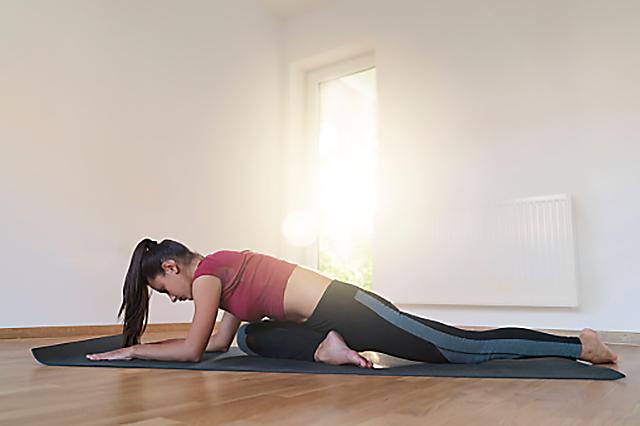
Resting Pigeon Pose
The Resting pigeon pose is also called the extended one-legged pigeon pose. This variation is a deeper form of the pigeon pose.
Step By Step Instructions To Do Extended One-Legged Pigeon Pose:
- For this yoga pose, lengthen the spine being in the classic pigeon pose
- Now drag the front leg forward
- Bending forward from the waist bring the forehead on the floor
- Stretch your hands forward, palms touching the floor
- Hold on to this position for 30 to 60 seconds
- Get back to your previous position
- Repeat this process on the other side
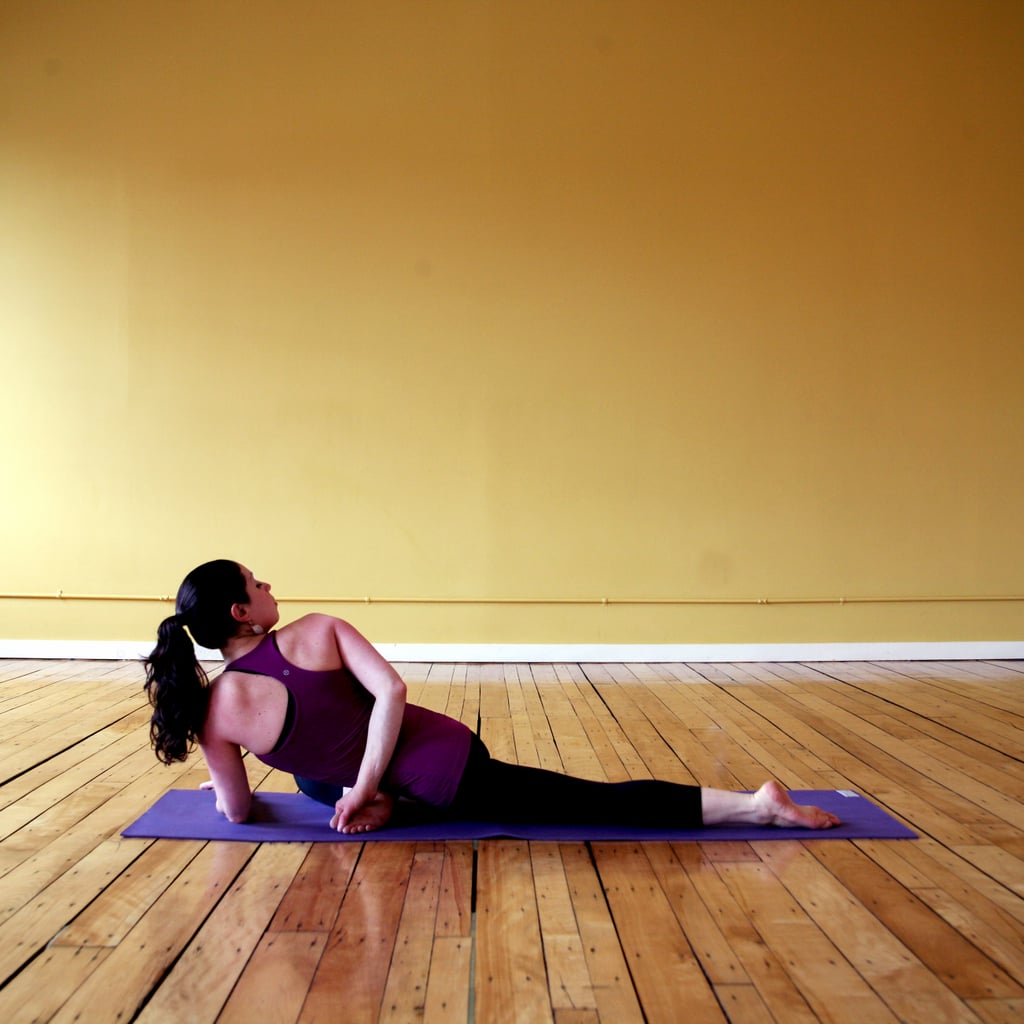
Source :- media1.popsugar-assets . com
Revolved Pigeon Pose
This Revolved Pigeon Pose generally brings a twist in our spine. This Revolved Pigeon Pose is perfect for releasing back muscles and consequently, it allows our body to get rid of tension, stress, and anxiety.
Step By Step Instructions to Do Revolved Pigeon Pose:
- From being in the classic pigeon pose take your right leg forward
- Place the left hand at the center of your yoga mat (Just right in front of the right shin)
- Now rotate your torso from the hip to your right side
- Wrap the right arm around the back so that you can hold your waist or big toe or your right hip from the side.
- Inhaling lengthen the spine as much as you can
- Now exhaling twist your body a little deeper
- Hold on to this posture for about 30 seconds to 60 seconds
- Repeat the process on your left side too
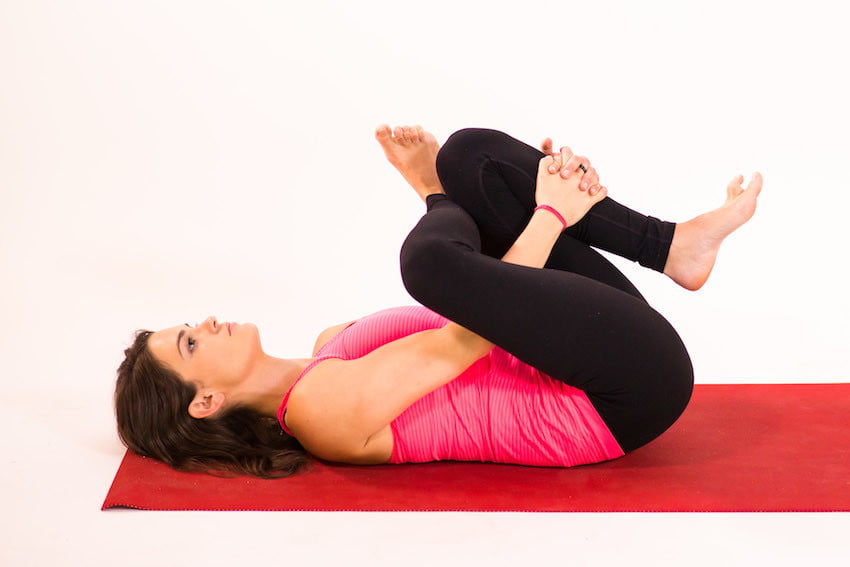
Source :- syphonfitness . com
Reclined Pigeon Pose
The Reclined Pigeon pose is often affectionately called “dead pigeon pose” in English. This Reclined Pigeon Pose is also known as the “Supta Kapotasana” in Sanskrit. This Pigeon pose variation is perfect for yogis with complex knees. This pose also allows for the hip-opening stretch at the same time it manages to keep our knees protected.
Step By Step Instructions To Do Reclined Pigeon Pose:
- At first lie on a yoga mat on your back
- Now take the right ankle across the left thigh (try to take the thigh closer to your knee)
- Rotate the right thigh externally
- Now bending your both knees bring them close to your chest
- Keep your right leg over your left leg in such a way as if you are resting your right leg (For vivid idea see the picture)
- Thread the right arm through the gap between the legs to reach the left arm around the right shin (you can also hold your hand at the back of the left thigh)
- Keep your shoulder and head touching the floor (Do not lift head and shoulder)
- Hold on to this posture for about 30 seconds to 60 seconds
- Get back to your previous position and relax at the same time.
- Repeat the whole process with your another side
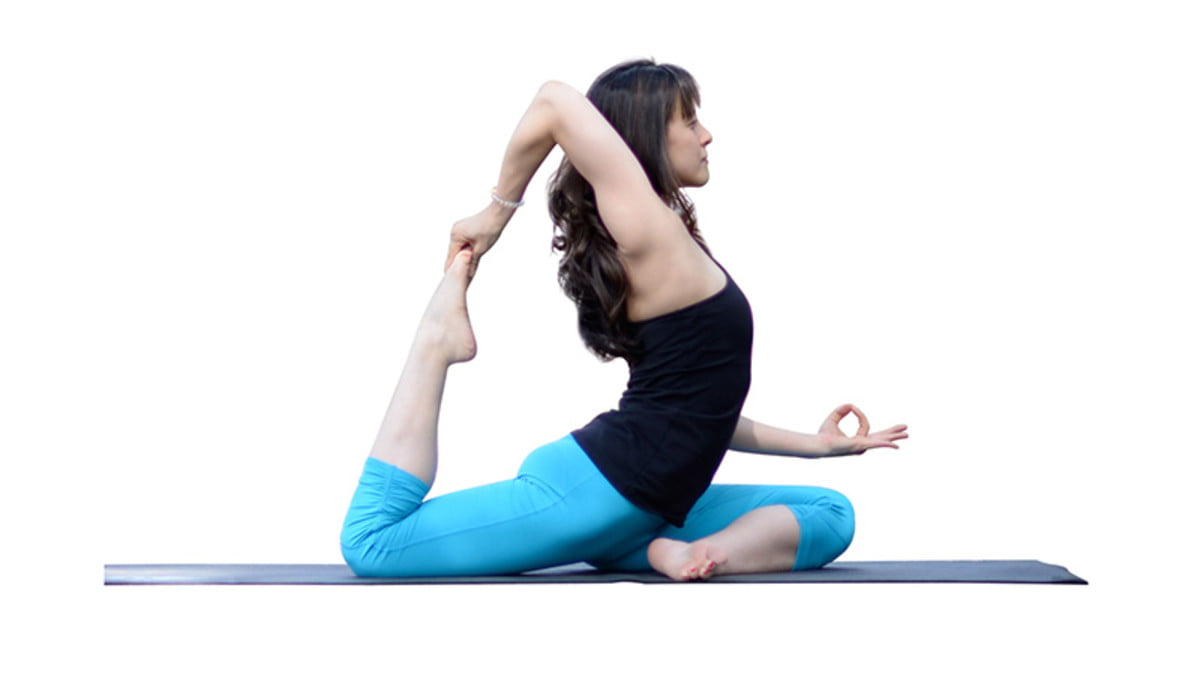
One-Legged King Pigeon Pose
The one-legged king pigeon pose is another form of the pigeon pose. This one-legged king pigeon pose is one of the most challenging Kapotasana or pigeon pose variations and it opens up our whole front body as well as shoulders and hip flexors.
Step By Step Instructions To Do One-Legged King Pigeon Pose:
- From being in the classic pigeon pose take the right leg towards the front
- Now bend the left leg, while you bring the left foot close to the spine
- Take one or both hands over the head bending the elbows
- Now hold the left foot with either one hand or both hands
- If you hold your left foot with one hand then take another hand on the front side just shown in the picture
- Look towards the sky
- Hold on to this posture for about 30 to 60 seconds
- Repeat the whole process on the right leg
Regardless of whether you have a fondness for or aversion to these variations of the pigeon pose, the key is to persevere and not abandon them. The numerous benefits of Kapotasana will consistently provide motivation for you to continue practicing these diverse pigeon pose variations.
Be always kind to your body as well as remember to guard the knees while performing these pigeon pose variations. Allow the hips to open as per your capacity, do not forcefully open them and only thus these variations will reward you!
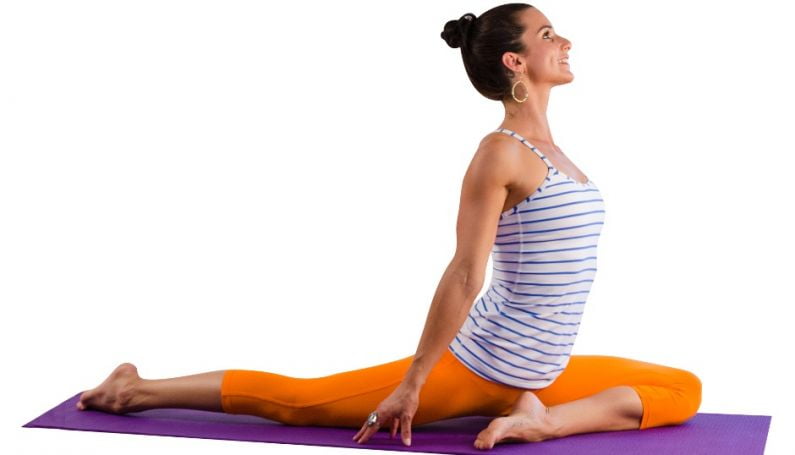
FAQ’s Of the Kapotasana or the Pigeon Pose:
Here are some FAQ’s regarding the Kapotasana or the Pigeon Pose given below. Let’s check out the FAQ’s carefully.
What is the best time to Perform This Kapotasana or the Pigeon Pose?
The best time to perform this Kapotasana or the variations of pigeon pose is certainly early morning or dawn.
For How Long Do I Have To Hold The Posture?
Hold for at least 30 seconds to 60 seconds or as per your capability. Do not force the body. You will slowly able to increase the time.
Can Beginners Perform Kapotasana or the Pigeon Pose?
If you are new to yoga then do not try the Kapotasana or the pigeon pose as it is quite hard and requires expert’s advice to execute the posture perfectly.
I’m New To Yoga…Can I Practice Kapotasana or The Pigeon Pose?
NO…if you are new to yoga then do not practice Kapotasana or the pigeon pose. But you can practice the Pigeon pose variations instead. When you get used to the pigeon pose variations only then perform the Kapotasana or the pigeon pose.
Why Should I Practice Kapotasana Or The Pigeon Pose at Dawn?
Well, you can also practice Kapotasana or the Pigeon Pose in the evening or any time you want. However, it is advised to perform Kapotasana Or the pigeon pose at least 5 to 6 hours after taking the meal. You have to do this yoga empty stomach. That’s all is required.
Why do I need Yoga Expert’s Advice to Perform Kapotasana Or the Pigeon Pose?
Well, you need an expert’s advice or instructions to perform Kapotasana or the Pigeon Pose because it is of a quite hard level of yoga asana and one single wrongdoing can harm your body to a great extent instead.
Therefore, it is always better to take expert’s instructions before starting this yoga asana.
Can Pregnant Ladies Do This Yoga Asana?
NO…if you are pregnant then stay away from Kapotasana or the Pigeon Pose. It is certainly not your cup of tea.
Is it Necessary to Practice Kapotasana Or The Pigeon Pose on an Empty Stomach?
YES… you have to practice this asana on an empty stomach. It will be better if you practice this asana at least after 5 to 6 hours of your meal.
Can Little Child Perform Kapotasana or The Pigeon Pose?
Well, if your baby is practicing yoga asana from a very early age then, of course, your baby can do the Kapotasana or The Pigeon pose. But do not let your baby emphasis too much on their body. That will be all.
Does The Kapotasana or The Pigeon Pose Help to Lose Weight?
As there are many stretching involved in the Kapotasana or the Pigeon Pose so YES, the asana helps to reduce weight as well as shaping the body if you practice the Kapotasana and the Pigeon Pose variations regularly.
Is There Any Age Limit For Practicing The Kapotasana or The Pigeon Pose?
No… there is not an age limit for practicing this asana. So far you feel comfortable doing this asana, you are able to do it. This asana is suitable for every age group of people.
What If I Do Not Practice These Asanas Regularly?
Well, if you are not able to practice Kapotasana or the pigeon pose regularly, you will certainly not get affected for this but you will also not get any Kapotasana benefits from this asana. To get the most Kapotasana benefits, regularity is the key.

